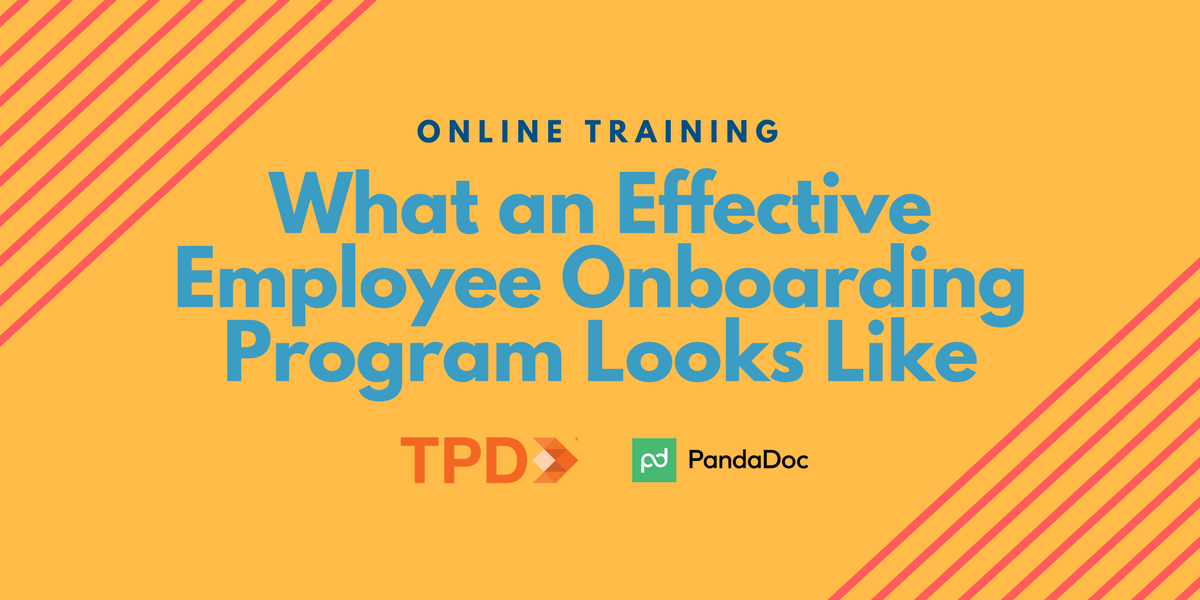
We’ve got good news and bad news for all the hiring managers out there.
The bad news is, more than 40 percent of your new hires will quit within the first month. And it will cost you big time.
The good news is, you can pre-empt that problem by designing an employee onboarding experience that wows them, and may not make them stay forever, but will at least convince them to stick around for more than a few months. In fact, 69 percent of employees say they are more likely to stay for at least three years after a great initial onboarding experience.
How do you design an onboarding process that convinces superstar candidates to stick around? It’s different for every company. So we’ve put together eight onboarding ideas to give some inspiration for you to craft the perfect onboarding experience that sets the tone for their whole tenure at your company.
1. Personalized welcome letter
From the moment the offer letter is signed, the onboarding process has begun. Set the tone with a personalized letter before all the legaleze that lets them know you’re actually looking forward to working with them. Lever takes this to the next level by creating a personalized, animated GIF involving their whole team to welcome new employees even before their first day.

2. Welcome swag kit
Put together a welcome kit that’s tailored to your brand with everything your new hire will need such as branded pens, mug, water bottle, journal, USB stick, and business cards. Some brands go above and beyond, including items such as a Kindle, laptop, iPad, and even a spouse gift. After receiving that kind of welcome, the last thing on your mind is handing in your resignation letter.
3. Have everything set up for them
Everything. Desk, chair, computer set up and turned on. Email account ready, passwords written down. Business cards with the correct name and job title. Phone connected. This shows new hires they’re not an afterthought, and your company knows how to get things done. If you have everything ready without an IT person underneath their desk when they first sit down, we guarantee your new employee will be impressed.

4. A written onboarding schedule
New employees are already feeling lost. Having an actual written onboarding schedule for their first seven days goes a long way. Be sure to schedule in alone time too. Things like “two hours for reading company manual and asking questions” will help them acclimatize themselves while having a tangible task to complete.
5. Take them for lunch
Taking care of lunch on the first day is critical. Not only does it make the new hire feel cared for, it’s their first opportunity to relax socially with their new co-workers. Cementing those relationships will be one of the most important keys to retaining new hires. If there’s too many new hires to go out, order in sushi and make it a party.
6. Insider job description
Once the initial meet-and-greets and office tours are complete, it’s time to give your new hire a clear, compelling vision for their first six months on the job. While the initial job description is meant to attract the right candidate, the insider job description is a second document that lays out what you would like to see them accomplish in the company. It drills much deeper than the job board write-up, and ensures the new hire never has to ask “what do I do now?”.
7. High-frequency check-ins
Because the first 30 days has a high turnover possibility, you should plan to meet one-on-one with the employee fairly frequently and encourage them to share anything that’s on their mind. This is when you can get ahead of bombshells like “this role isn’t what I expected”. In the first 30 days, there’s still time to make changes, adjust expectations, and for the right candidate, shift their role.
8. Regular performance reviews
Yes, performance reviews can actually help retain people. As long as your reviews are focused on building your employee up, helping them meet their goals, recommending great books and blogs to help them level up, and providing highly constructive feedback, your employee will be inspired to stick around and become the very best they can be. And if they’re not motivated to improve, they’re probably not the kind of employee you want anyway.
Want a deeper dive into how to design an effective employee onboarding process? Watch a free recording of our webinar, “What an Effective Employee Onboarding Program Looks Like.”
Filed under Creating Your Dream Team 101

.png?width=2400&name=HQ%20TPD%20careers%20hero%20(1).png)




